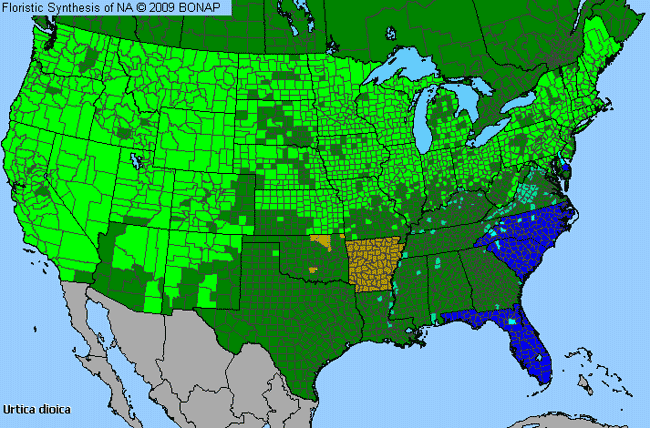Stinging Nettle (Urtica dioica)

Family:
URTICACEAE
Genus: Urtica
Species: Stinging Nettle (Urtica dioica)
Alternative Names: Urtica serra
Genus: Urtica
Species: Stinging Nettle (Urtica dioica)
Alternative Names: Urtica serra
Stinging Nettle Species Description

This species includes one or more native variety (or subspecies) to North America AND one or more introduced variety (or subspecies).
Allergenicity: Stinging Nettle (Urtica dioica) is a moderate allergen.
Pollination: Occurs in following seasons depending on latitude and elevation: Spring to Fall.
Angiosperm - Flowering Dicot: Plants in this group have two embryonic leaves (dicotyledons). Examples of dicotyledons are beans, buttercups, oaks, sunflowers, etc.
Forb: A broad-leaved herb other than a grass, especially one growing in a field, prairie, or meadow.
Weed: Any plant growing in cultivated ground to the injury of the crop or desired vegetation, or to the disfigurement of the place; an unsightly, useless, or injurious plant.
Perennial: Living for many years.
State Noxious Weed: unpleasant and possibly also harmful.
Wetland Plant: Plants growing in aquatic or wetland habitats. These include all known floating, submerged, and emergent taxa, plus those that are found in permanently or seasonally wet habitats.
Herbaceous Stem: Not woody, lacking lignified tissues.
Stinging Nettle Species Usage

Pharmacological: Used in medicine or pharmacological research.
Dye: Used as a colored dye.
Honey/Bee Pollen: A plant used as a source of food for Honey Bees, and may be a flavor of honey such as clover or alfalfa.
Related Links

More Stinging Nettle (Urtica dioica) imagesby Jessie M. Harris from BONAP











